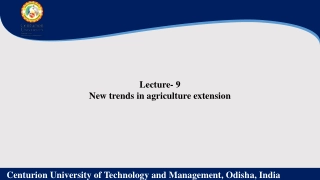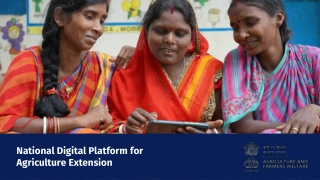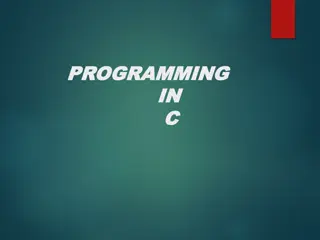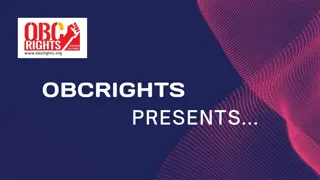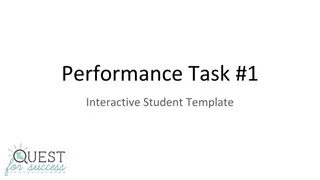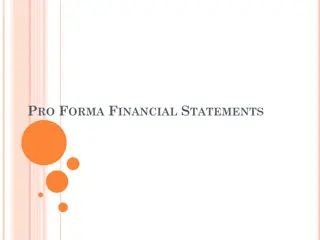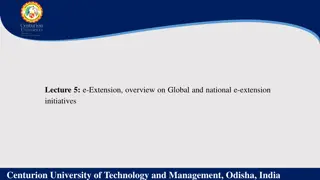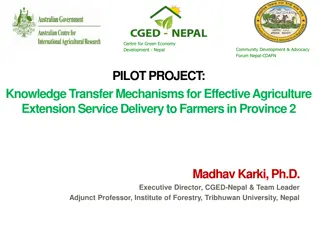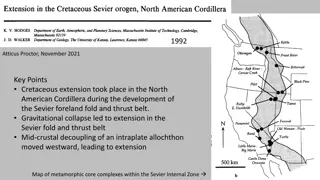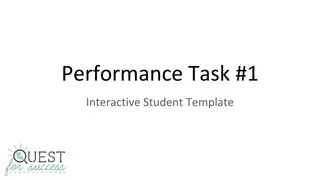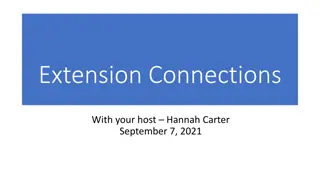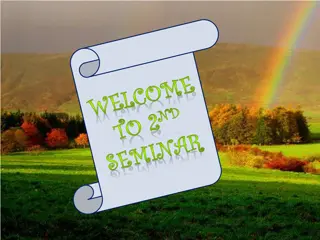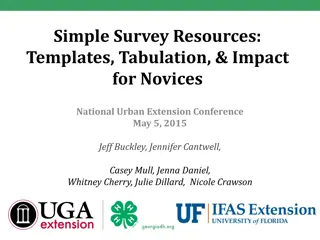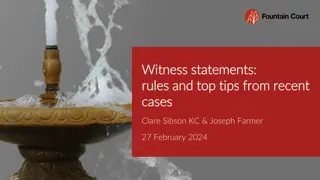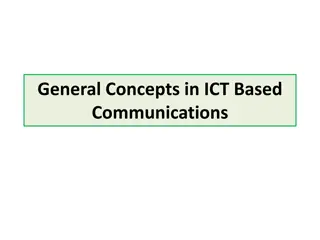Enhancing Extension Program Impact: Crafting Compelling Statements
Craft impactful statements to demonstrate the positive outcomes and improvements brought about by your Extension program. Understand the key components of impact statements and their significance in conveying the value and effectiveness of your initiatives to various stakeholders. Utilize evidence-based data to showcase results, align outcomes with program goals, and emphasize the relevance of your work in addressing real-world challenges.
Download Presentation

Please find below an Image/Link to download the presentation.
The content on the website is provided AS IS for your information and personal use only. It may not be sold, licensed, or shared on other websites without obtaining consent from the author. Download presentation by click this link. If you encounter any issues during the download, it is possible that the publisher has removed the file from their server.
E N D
Presentation Transcript
FOLLOW THE LOGIC: WRITING IMPACT STATEMENTS THAT SHOW HOW YOUR EXTENSION PROGRAM IMPROVED THE SITUATION Dr. Amy Harder, Professor and Director of PDEC Department of Agricultural Education & Communication
Rule #1 of Writing Impact Statements Don t be a Wally! Image obtained from dilbert.com
Common Questions For whom are you writing the impact statements? What is the message you are trying to convey? Does anyone really use these anyway?
Answers For whom are you writing the impact statements? Audiences include: DEDs, county commissioners, USDA/NIFA, advisory councils, UF/IFAS Communications, UF/IFAS Legislative Affairs, Chris Moran, the P/T/PS committee What is the message you are trying to convey? My work directly contributes to solving real problems in my community/geographic area of responsibility Does anyone really use these anyway? You can use them with your local stakeholders and to assess if the work you are doing is making the difference you hope it will UF/IFAS uses them to educate state and national partners about the value created through Extension
Where are impact statements used? Federal report (aka AREERA or NIFA Report) Landgrantimpacts.org Return on Investment brochure Solutions for Your Life website Infographics Ad hoc requests
Things Youll Need to Write an Effective Impact Statement A well-written logic model See Logic Model Basics, Using Logic Models for Program Development, or UWEX Extension for help Outcome data Time
Impact Statement Components Response What problem is being addressed? This should come from your situation statement in your logic model Focus on the PROGRAM; describe the big picture response Teaching methods Target audience and # reached Partners and financial contributors Results/Relevance Use verifiable, evidence-based data to describe outcomes Outcomes should align with your logic model Why are those outcomes important for addressing the problem; why should the average citizen care that Extension does this work? Can also use data from your situation statement to address this Optional for Workload, required for ROA Recap Results Relevance . . . It s not either/or, it s both!
Ask Yourself: What did I/we do to solve a problem? What proof do I have that it made a difference? Why does my work matter?
Excerpt from 2019 AREERA Public support is required for policies that protect agricultural lands in Florida. Agricultural tours and events serve as a means of educating people about agriculture in impactful ways that make agriculture real to them. In 2019, multiple Extension agents in five counties coordinated various farm tours, a food business networking event, presentations, and other ag awareness events, educating 882 people. Post event-surveys indicated [% knowledge gain and behavior change]. Educating people about agriculture is the first step towards cultivating positive attitudes about agriculture, and empowering people to actively support agriculture through purchasing behaviors, advocacy, or policy.
Excerpt from 2019 AREERA Florida is home to an estimated 315 species of native wild bees. Many of these species have declined in recent decades and overall bee diversity has decreased. Little information currently exists for Florida residents on gardening for native bees. In 2019, a state specialist delivered programs, alongside UF/IFAS county Extension agents, on gardening and managing habitat for native bees to 175 MGs and 557 Florida residents engaged in gardening, land management, restoration, or conservation. Follow-up surveys showed [% increased knowledge and intent to adopt management recommendations]. The changes made by participants in their gardening practices and land management decisions will increase floral and nesting resources for native wild bees, which are important pollinators for both crop and wild plants. Therefore, the conservation of native wild bees will benefit native plant biodiversity and regional crop production.
Excerpt from 2020 AREERA The Pinellas Youth Advisory Committee consists of high school aged youth. They recognized a problem with the mental health sessions being presented in their schools and took on the ambitious goal of hosting a youth mental health fair. Due to COVID-19, they moved their mental health fair to an online format. The webinars were a resounding success and have been shared on various social media avenues and were featured on Bay News 9. In a survey about their YAC experience, youth indicated they built many life skills. They also helped bring awareness to the topic of youth mental health. In a 2020 survey by 4-H and the Harris Poll, 81% of teens say mental health is a significant issue for young people. Positive youth development programs like YAC and 4-H have been shown to build resiliency and provide protective factors against negative outcomes (Lerner & Lerner, 2012).
Excerpt from 2020 AREERA The Florida Panhandle has the highest average total rainfall in the state (65 ) and limited stormwater management has resulted in legacy water quality and flooding problems across the region. A team of researchers, specialists and Extension faculty collaborated to develop a regional stormwater education program. We gave one in-person stormwater management workshop in 2019 funded through an IFAS Extension grant, and a free 2-part webinar series in 2020. Participation grew from 22 in 2019 to 83 in 2020. Nine people responded to a 6-month follow-up survey for the 2020 webinar series. Five participants (62%) had used the information in their line of work, 3 (60%) stated that decisions related to stormwater management that they had taken were altered as a result of the information presented. UF/IFAS Extension and Research faculty are providing needed stormwater management trainings to local stakeholders including city and county personnel, professional engineers, and residents to better understand the relationship between how development occurs, its impact on hydrology and water quality downstream, and available solutions to manage and mitigate these impacts in the Florida Panhandle.
Connecting It Together Situation statements identify the problem and justify the need for programming Logic models show what needs to be taught, learned, and practiced to solve the problem Impact statements explain what was done to solve the problem and why it matters

 undefined
undefined undefined
undefined

